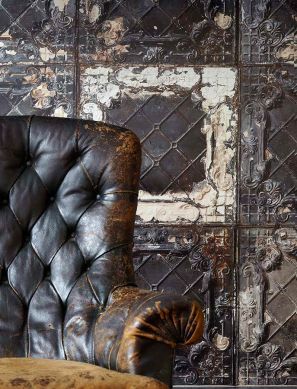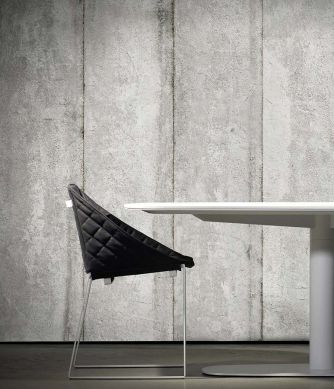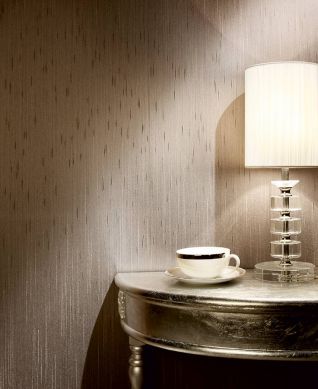Patterned wallpapers have a special and dominant effect on a room, which is why adorning all walls with the same wallpaper can be a bit “too much”. The size, height and lay-out of the room as well as the number of windows also have to be taken into consideration in order to achieve a harmonious overall picture when using patterned wallpaper on all four walls. It simply depends on the general circumstances and might just not be appropriate for a specific room. Buyers of wallpaper often wish to create focal points and accentuate and emphasise a wall or a part of the room by applying a stunning patterned wallpaper. The question arises: How should the other walls be treated in order to achieve a coherent overall picture?
There are a variety of ways to cleverly combine the general wall décor with patterned wallpapers, all of which offer plenty of creative freedom. We have chosen four specific ideas and added explanations as to what to watch out for.
1. Painting the remaining walls with a matching colour
This is the preferred option of many of our customers as it is relatively simple and easy to realise. For a majority of our striking patterned wallpapers, white walls are a suitable partner. As white is a neutral tone, it emphasises the wallpaper and leads the focus onto it.
But it doesn't have to be white; especially if you’re trying to achieve a stylish atmosphere in the room. It's not always easy for laypeople to find the matching colour. Here is a tip to help you avoid mistakes: Use the colours of the pattern on your wallpaper as a basis and pick one or two hues. When deciding whether to choose lighter or darker colours, think of the size of the room and the number of windows and doors which let the light in. Another criterion is the general effect of a colour on the mood (e.g. stimulating or calming).

Ready mixed paints available in retail outlets are rarely an exact match for your wallpaper pattern. Specialist shops frequently offer a service whereby the chosen tone is mixed individually. You should always entrust specialist retailers with mixing the paint, as they use high-tech programmable colour mixing devices. You can have your desired hue mixed in most large DIY shops or specialist shops for painters/decorators. Take a piece of your wallpaper to the shop to ensure that you achieve the correct paint colour. The wallpaper pattern is scanned in and intelligent computer software identifies the correct colour combination and colour designation for your desired hue from the wallpaper (e.g. to RAL standard). This means that the machine will mix the colour accurately.
Please note the following important information regarding painting the wall(s): Just like wallpapering, the surface needs to be structurally sound, clean and smooth; this might mean that it has to be pre-prepared with deep primer in order to achieve the desired results. Whilst the grammage and structure of wallpapers can sometimes offset minimal unevenness and defects on the surface, paint cannot provide this effect. With paint jobs, lacking preparation will always show: the wall might appear uneven, stained or crumbly if the surface hasn't been prepared properly.
2. Structures/effects of the wallpaper as a design basis for remaining walls
This sounds more complicated than it is. First of all, take a closer look at your wallpaper and check out its structure by simply touching it. What ideas does this trigger? Does the wallpaper have an elegant shine or a silky shimmer, a precious metal effect in gold or silver, does it feel rough, smooth, soft, feathery, ribbed or woolly? And what is the individual interior design style you are hoping to achieve with your décor for the remaining walls? Perhaps Shabby Chic, Scandinavian, Bohemian, Industrial or Purism? Analyse your wallpaper and your furnishings, taking into consideration your preferred colours and materials for furniture and decorative elements.
To help your imagination along, we have chosen a specific wallpaper example. You can apply various different wall décor design options, depending on your own style preferences.
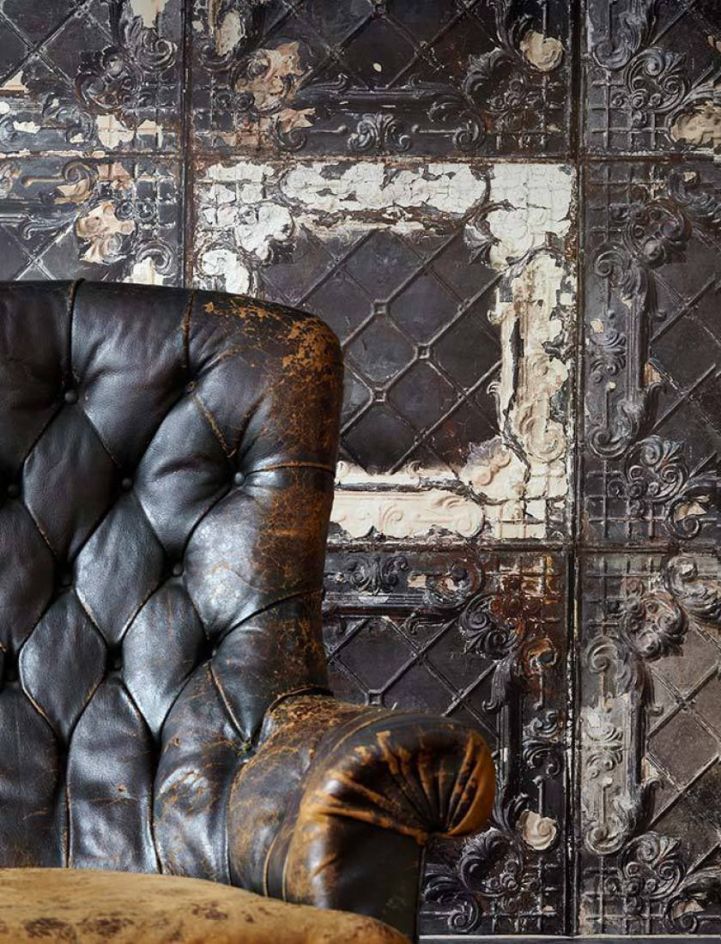
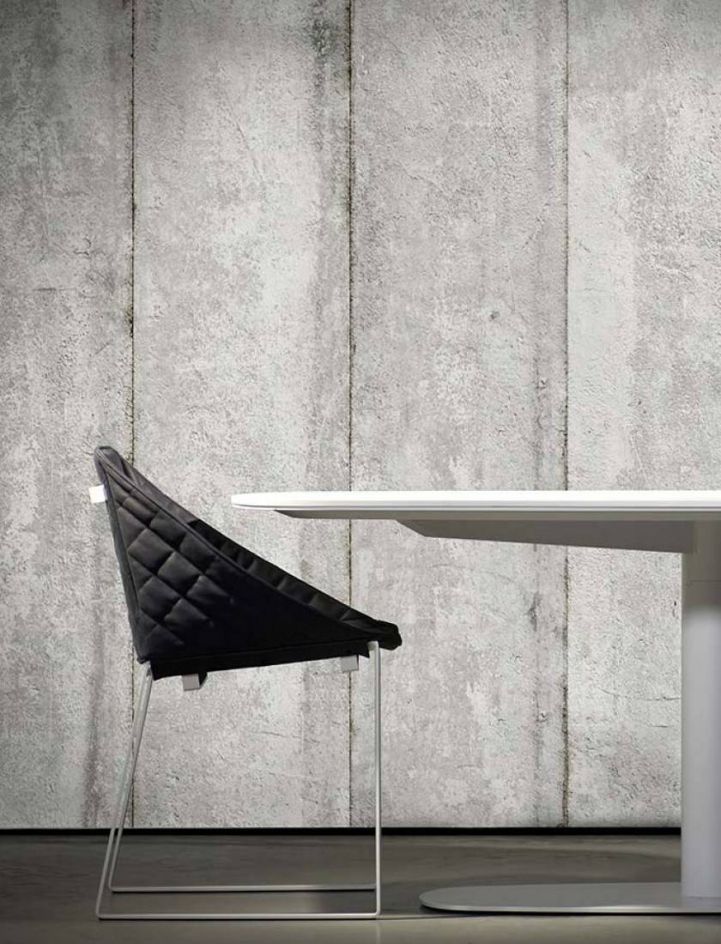
Let's assume you are an aficionado of urban industrial style and a fan of timeless materials, and you don't mind them showing the signs of the times, i.e. a chic “wear and tear” effect. Let's further assume you choose the Brooklyn Tins 07 wallpaper from our range and your plan is to use it just on one feature wall. In terms of structures and colours, this wallpaper provides a number of options for your wall design. Here are a few ideas:
- Spatula Method: Mirror the rough structures of the wallpaper by utilising the spatula technique or plastering the other walls. The final look of the wall surface should be quite irregular and the walls should then be painted in a hue taken from the patterned wallpaper - in this case a creamy white.
- Concrete look for the remaining walls: The concrete look is very much “in” at the moment, and it looks like it's here to stay. It's ideal to create the highly sought-after loft ambience, the most important style elements of which are walls that show clear signs of “material deterioration”. Peeling, flaking, weathered concrete is being “mimicked” on the walls. For this wall treatment, you can find special sets in DIY and building supply shops. They usually contain fibre plaster, wall as well as mixing paint, and wallpaper paste, and they require two or more applications/layers. For those who aren't fans of concrete, there are similar sets for the marble, sandstone or slate look.
- Effect glazes in gold, silver, bronze or rust are also great companions for the example wallpaper. For these, a layer of primer paint is applied first, followed by the glaze, which creates the typical metal sheen or the bronze or rust patina. Sets consisting of primer and glaze are readily available in specialist shops and will make finding the correct colour a doddle.

3. Interesting wallpaper materials creating haptic and high-contrast dynamics
Contrasts are an important part of our lives; they are what make the world colourful and dynamic. When it comes to interior design, it should be appealing to all senses as this is a sure-fire way to create a comfortable ambience and a feeling of well-being. Our senses work together in harmony. For instance, if we see a fluffy blanket, we can create a mental image of the comfort it would provide without even touching it. It will fill us with a warming cosy feeling. At the same time, contrasts are necessary in order to fully appreciate this emotion - for instance, we require the concept of cold in order to desire and enjoy warmth.
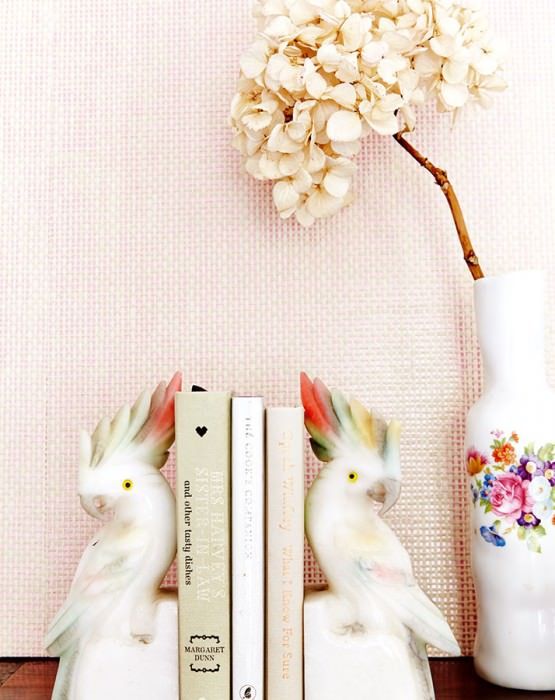

And this takes us smoothly to our third idea: Mixing patterned and designer wallpapers with wallpapers made from special materials. In our wallpaper shop, you will find wallpapers made from special materials which invite you to look, touch, and enjoy, and which can be beautifully combined with various different patterned wallpapers. These wallpaper materials are characterised by their exceptional structure; as a result, the colours are often kept simple or might just present some shading or reflection effects. Discover how special structures create patterns in textile wallpapers, leather wallpapers, glass bead wallpapers, crush-effect wallpapers, effect foil wallpapers, metal-look wallpapers, natural wallpapers or flock wallpapers. They complement patterned wallpapers with smooth surfaces in a most splendid manner and add to the sensory experience.
4. Mixing different patterned wallpapers
Admittedly, this combination is a creative challenge and requires not only a bit of courage but also a good eye. At this point, we'd like to refer you to the photograph of our Brazilian customer Juliana Fernandes. It depicts a fantastic example of a room that comes to life through a clever mix of matching colours and distinctly different patterns, which nevertheless are combined perfectly to make for an unforgettable impression.
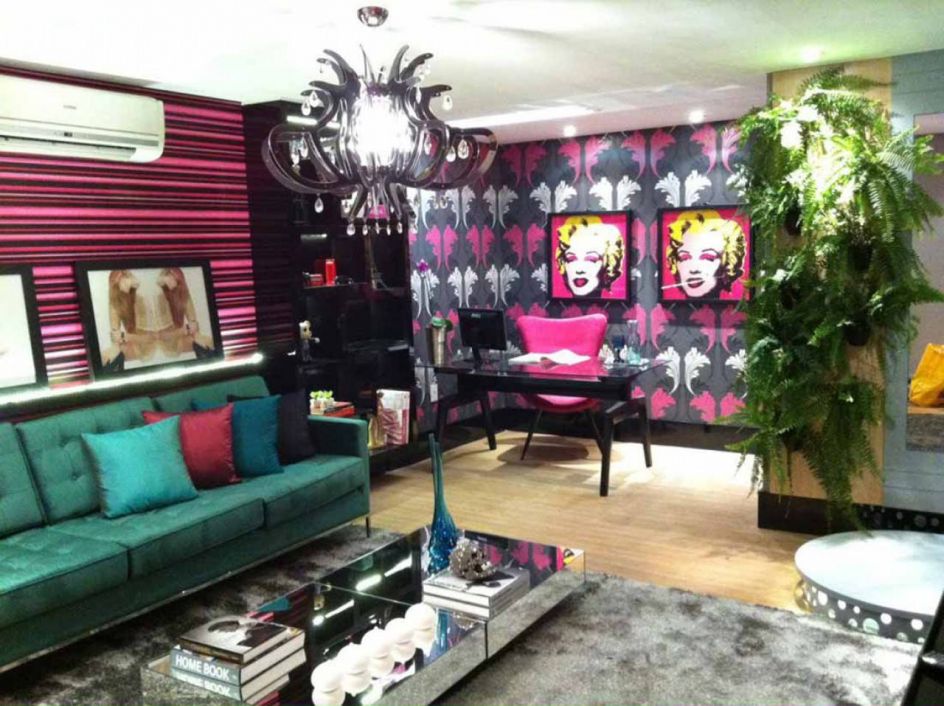
She cunningly mixes a striking stripey wallpaper with an imaginative ornamental design, and in the process manages to create an atmosphere that is neither too fussy nor oppressive, but instead very fresh and with great artistic flair: She separates two distinct areas of the room with two different patterned wallpapers which do, however, both share the same colour concept. The inspirational ornamental wallpaper is the backdrop to her working space, whereas the striped wallpaper frames the living area with sofa and coffee table. The black shelving unit works both as a connecting as well as a separating element and adds to the special atmosphere.
In conclusion, there are two components that need to be taken into account when combining patterns: The same colours should be reflected in both patterns and the room should be subdivided by the different wallpapers.



